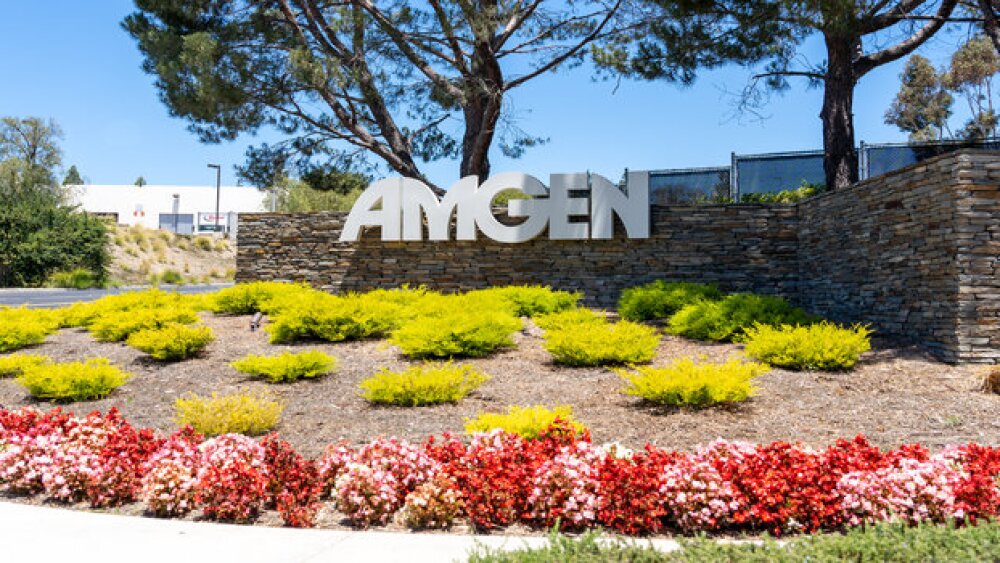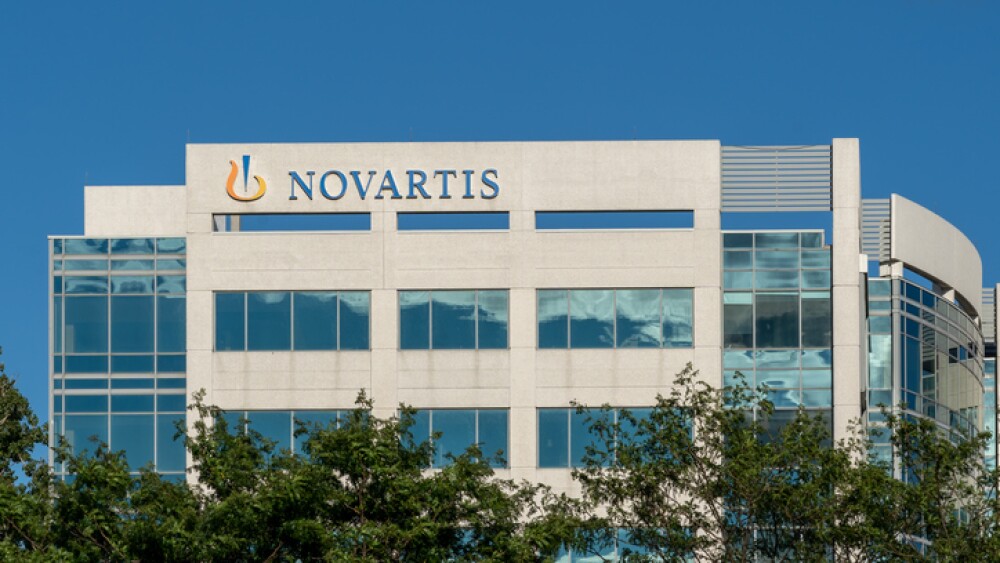Get the latest biotech news where you want it. Sign up for the free GenePool newsletter today!
Chicago, June 22, 2013 – Takeda Pharmaceuticals U.S.A., Inc. today announced new two-year data regarding the efficacy and safety of NESINA (alogliptin) in patients with type 2 diabetes mellitus, which will be presented at the 73rd Scientific Sessions of the American Diabetes Association (ADA):
“Durability of the Efficacy and Safety of Alogliptin Compared to Glipizide Over 2 Years When Used in Combination with Metformin” (Del Prato et al.), poster #66-LB, presented on Sunday, June 23 (12:00 – 2:00 p.m. CT)
Results of the ENDURE study, a three-arm, multicenter, randomized, double-blind, active-controlled study evaluating the durability of the safety and efficacy of once-daily alogliptin compared to glipizide, each in combination with metformin, showed that the efficacy of alogliptin was sustained at week 104. A primary efficacy endpoint was least square mean change from baseline in HbA1c (A1c) at week 104, and secondary endpoints included change from baseline in fasting plasma glucose, and incidence of A1c less than or equal to 7.0%. The treatment arms included alogliptin 12.5 mg + metformin (n=880), alogliptin 25 mg + metformin (n=885), and glipizide 5 mg titrated to a maximum of 20 mg + metformin (n=874). Reductions in A1c at week 104 with alogliptin were -0.68% and -0.72% for the 12.5 mg and 25 mg groups, respectively, and with glipizide was -0.59%. 48.5% of patients in the 25 mg alogliptin group achieved an A1c of less than or equal to 7% at week 104, and 42.8% achieved this with glipizide; the proportion for the 12.5 mg alogliptin group was 45.6%. The number of patients experiencing one or more adverse event was similar across all three treatment groups. Lower incidence of hypoglycemia (including severe hypoglycemia) was seen with alogliptin (2.5% and 1.4% of patients in the 12.5 and 25 mg alogliptin groups, respectively, experienced at least one hypoglycemic event, compared to 23.2% of patients in the glipizide group).
Takeda has built a strong foundation in and maintained a robust focus on diabetes over the past 20 years, and has recently made alogliptin, the fixed-dose combination (FDC) therapy with metformin HCl, and the FDC with pioglitazone available in U.S. pharmacies under the brand names NESINA, KAZANO (alogliptin and metformin HCl) and OSENI (alogliptin and pioglitazone). NESINA, KAZANO and OSENI are approved by the U.S. Food and Drug Administration (FDA) for the treatment of type 2 diabetes in adults, as adjuncts to diet and exercise. The European Medicines Agency (EMA) has accepted Marketing Authorization Applications (MAAs) for alogliptin, the FDC with metformin HCl and the FDC with pioglitazone. The EMA Committee for Medicinal Products for Human Use (CHMP) is expected to adopt an opinion for alogliptin and the FDC therapies in 2013.
Indications
Indications for NESINA (alogliptin) 6.25 mg, 12.5 mg, and 25 mg Tablets; KAZANO (alogliptin and metformin HCl) 12.5 mg/500 mg and 12.5 mg/1000 mg Tablets; and OSENI (alogliptin and pioglitazone) 25 mg/15 mg, 25 mg/30 mg, 25 mg/45 mg, 12.5 mg/15 mg, 12.5 mg/30 mg, and 12.5 mg/45 mg Tablets
NESINA, KAZANO, and OSENI are indicated as an adjunct to diet and exercise to improve glycemic control in adults with type 2 diabetes mellitus.
NESINA, KAZANO, and OSENI are not for treatment of type 1 diabetes or diabetic ketoacidosis.
Important Safety Information
WARNING: CONGESTIVE HEART FAILURE—for OSENI
Thiazolidinediones, including pioglitazone, which is a component of OSENI, cause or exacerbate congestive heart failure in some patients. After initiation of OSENI, and after dose increases, monitor patients carefully for signs and symptoms of heart failure (e.g., excessive, rapid weight gain, dyspnea, and/or edema). If heart failure develops, it should be managed according to current standards of care and discontinuation or dose reduction of pioglitazone in OSENI must be considered. OSENI is not recommended in patients with symptomatic heart failure. Initiation of OSENI in patients with established New York Heart Association (NYHA) Class III or IV heart failure is contraindicated.
WARNING: LACTIC ACIDOSIS—for KAZANO
Lactic acidosis is a rare, but serious complication that can occur due to metformin accumulation. The risk increases with conditions such as sepsis, dehydration, excess alcohol intake, hepatic impairment, renal impairment, and acute congestive heart failure. The onset is often subtle, accompanied only by nonspecific symptoms such as malaise, myalgias, respiratory distress, increasing somnolence, and nonspecific abdominal distress. Laboratory abnormalities include low pH, increased anion gap, and elevated blood lactate. If acidosis is suspected, KAZANO should be discontinued and the patient hospitalized immediately.
NESINA, KAZANO, and OSENI are contraindicated in patients with a history of serious hypersensitivity reaction to any of the components of these products, such as anaphylaxis, angioedema, or severe cutaneous adverse reactions. KAZANO is contraindicated in patients with renal impairment (e.g., serum creatinine levels =1.5 mg/dL for men, =1.4 mg/dL for women or abnormal creatinine clearance), which may also result from conditions such as cardiovascular collapse (shock), acute myocardial infarction, and septicemia. KAZANO is contraindicated in patients with acute or chronic metabolic acidosis, including diabetic ketoacidosis. Do not initiate OSENI in patients with established NYHA Class III or IV heart failure.
Warnings and Precautions—for KAZANO
Lactic acidosis: Warn against excessive alcohol intake. KAZANO is not recommended in hepatic impairment and is contraindicated in renal impairment. Ensure normal renal function before initiating and at least annually thereafter. Temporarily discontinue in patients undergoing radiologic studies with intravascular iodinated contrast materials or any surgical procedures necessitating restricted intake of food and fluids. Lactic acidosis due to metformin accumulation during therapy is fatal in approximately 50% of cases. The risk increases in patients with renal impairment, congestive heart failure requiring drug treatment, and with increasing age.
Vitamin B12 deficiency: Metformin may lower Vitamin B12 levels. Monitor hematologic parameters annually.
Warnings and Precautions—for OSENI
Congestive heart failure: Fluid retention may occur and can exacerbate or lead to congestive heart failure. Combination use with insulin and use in congestive heart failure NYHA Class I and II may increase risk. Monitor patients for signs and symptoms.
Edema: Dose-related edema may occur. Use with caution in patients with edema.
Fractures: Increased incidence in female patients. Apply current standards of care for assessing and maintaining bone health.
Bladder cancer: Data suggest an increased risk of bladder cancer in pioglitazone users. Data also suggest that the risk increases with duration of use. Do not use OSENI in patients with active bladder cancer. Use caution when using in patients with a prior history of bladder cancer. Tell patients to promptly report any sign of hematuria or other symptoms such as dysuria or urinary urgency as these may be due to bladder cancer.
Macular edema: Macular edema has been reported in some patients taking pioglitazone. Recommend regular eye exams. Instruct patients to report any visual changes promptly.
Ovulation: Therapy with pioglitazone may result in ovulation in some premenopausal anovulatory women.
Warnings and Precautions—for NESINA, KAZANO, and OSENI
Acute pancreatitis: There have been postmarketing reports of acute pancreatitis. If pancreatitis is suspected, promptly discontinue NESINA, KAZANO, or OSENI.
Hypersensitivity: There have been postmarketing reports of serious hypersensitivity reactions in patients treated with alogliptin such as anaphylaxis, angioedema or severe cutaneous adverse reactions. In such cases, promptly discontinue NESINA, KAZANO, or OSENI, assess for other potential causes, institute appropriate monitoring and treatment, and initiate alternative treatment for diabetes. Use caution in a patient with a history of angioedema with another DPP-4i because it is unknown whether such patients will be predisposed to angioedema.
Hepatic effects: Postmarketing reports of hepatic failure, sometimes fatal. Causality cannot be excluded. Baseline liver test panel is recommended. If liver injury is detected, promptly interrupt NESINA, KAZANO, or OSENI and assess patient for probable cause, then treat cause if possible, to resolution or stabilization. Do not restart NESINA, KAZANO, or OSENI if liver injury is confirmed and no alternate etiology can be found. Use with caution in patients with hepatic impairment.
Hypoglycemia: Insulin and insulin secretagogues are known to cause hypoglycemia. A lower dose of the insulin or insulin secretagogue may be required to minimize the risk when used in combination with NESINA, KAZANO, or OSENI.
Macrovascular outcomes: There have been no clinical studies establishing conclusive evidence of macrovascular risk reduction with NESINA, KAZANO, OSENI, or any other anti-diabetic drug.
Adverse Reactions
Most common adverse reactions (=4% of patients treated with NESINA 25 mg and more frequently than in patients who received placebo) were nasopharyngitis (4.4%), headache (4.2%), and upper respiratory tract infection (4.2%).
Most common adverse reactions (=4% of patients treated with co-administration of alogliptin and metformin) were upper respiratory tract infection (8.0%), nasopharyngitis (6.8%), diarrhea (5.5%), hypertension (5.5%), headache (5.3%), back pain (4.3%), and urinary tract infection (4.2%).
Most common adverse reactions (=4% of patients treated with co-administration of alogliptin and pioglitazone) were nasopharyngitis (4.9%), back pain (4.2%), and upper respiratory tract infection (4.1%).
Drug Interactions
Use of OSENI with CYP2C8 strong inhibitors (e.g., gemfibrozil) will, or inducers (e.g., rifampin) may, require dose adjustment.
Cationic drugs eliminated by renal tubular secretion should be used with caution if taken with KAZANO.
Please see accompanying Full Prescribing Information, including Medication Guide, for NESINA.
Please see accompanying Full Prescribing Information, including Medication Guide, for KAZANO.
Please see accompanying Full Prescribing Information, including Medication Guide, for OSENI.
For more information please contact Amy Losak at 646-935-3917
Takeda Pharmaceuticals U.S.A., Inc. and Takeda Global Research & Development Center, Inc.
Based in Deerfield, Ill., Takeda Pharmaceuticals U.S.A., Inc. and Takeda Global Research & Development Center, Inc. are subsidiaries of Takeda Pharmaceutical Company Limited, the largest pharmaceutical company in Japan. The respective companies currently market oral diabetes, insomnia, rheumatology, gastroenterology, and cardiovascular treatments and seek to bring innovative products to patients through a pipeline that includes compounds in development for metabolic and cardiovascular disease, gastroenterology, neurology and other conditions. To learn more about these Takeda companies, visit www.takeda.us.
Help employers find you! Check out all the jobs and post your resume.




